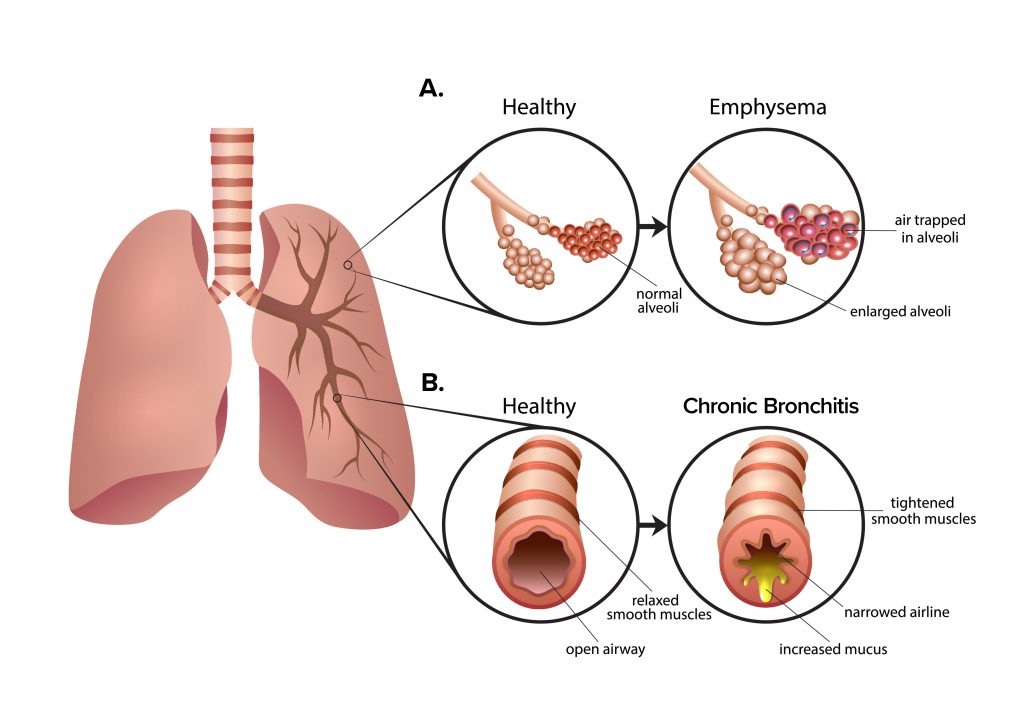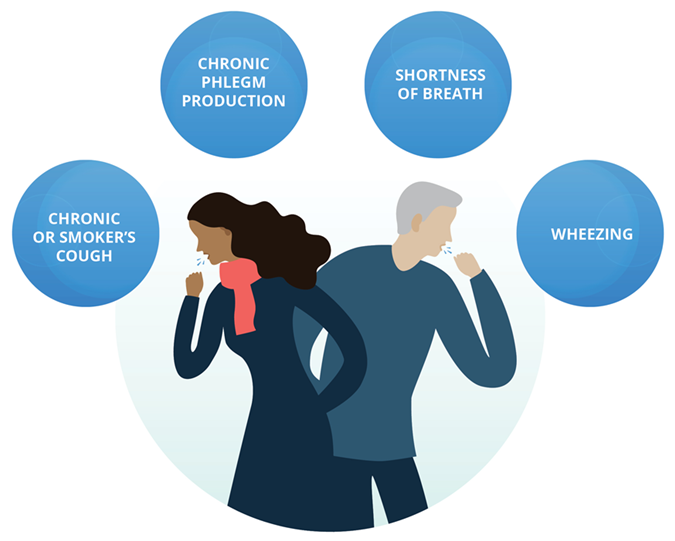Chronic Obstructive Pulmonary Disease
Published .
What is COPD (chronic obstructive pulmonary disease)?

COPD (chronic obstructive pulmonary disease) is a group of lung diseases that make it hard to breathe and get worse over time. Normally, the airways and air sacs in the lungs are elastic or stretchy. During inhalation, the airways bring air to the air sacs. The air sacs fill up with air, like a small balloon. During exhalation the air sacs deflate, and the air goes out. Patients with COPD have less air flow in and out of the airways because of one or more problems:
- The airways and air sacs of the lungs become less elastic
- The walls between many of the air sacs are destroyed
- The walls of the airways become thick and inflamed
- The airways make more mucus than usual and can become clogged
COPD includes two main types:
- Emphysema affects the air sacs in the lungs, as well as the walls between them. They become damaged and are less elastic.
- Chronic bronchitis, in which the lining of the airways are constantly irritated and inflamed. This causes the lining to swell and make mucus.
Most people with COPD have both emphysema and chronic bronchitis, but how severe each type is can be different from person to person.
The cause of COPD is usually long-term exposure to irritants that damage the lungs and airways. In the United States, cigarette smoke is the main cause. Exposure to other inhaled irritants can contribute to COPD. These include secondhand smoke, air pollution, and chemical fumes or dusts from the environment or workplace. Rarely, a genetic condition called alpha-1 antitrypsin deficiency can play a role in causing COPD.
Who is at risk for COPD (chronic obstructive pulmonary disease)?
The risk factors for COPD include:
- Smoking. This the main risk factor. Up to 75% of people who have COPD smoke or used to smoke.
- Long-term exposure to other lung irritants, such as secondhand smoke, air pollution, and chemical fumes and dusts from the environment or workplace
- Age. Most people who have COPD are at least 40 years old when their symptoms begin.
- Genetics. This includes alpha-1 antitrypsin deficiency, which is a genetic condition. Also, smokers who get COPD are more likely to get it if they have a family history of COPD.
- Asthma. People who have asthma have more risk of developing COPD than people who don’t have asthma. But most people with asthma will not get COPD.
Patient With COPD Call 911 Because Their Chronic Problem Has Gotten Worse

- Frequent coughing or a cough that produces a lot mucus
- Wheezing
- Shortness of breath, especially with physical activity
- Tightness in the chest
- Some people with COPD get frequent respiratory infections such as colds and the flu. In severe cases, COPD can cause weight loss, weakness in the lower muscles, and swelling in the ankles, feet, or legs.
- Changes in atmospheric pressure during a storm.
How is COPD (chronic obstructive pulmonary disease) diagnosed?
A physician may use many tools to make a diagnosis based on the following:
- A medical history, which includes asking about symptoms
- A family history
- Various tests, such as lung function tests, a chest x-ray or CT scan, and blood tests
